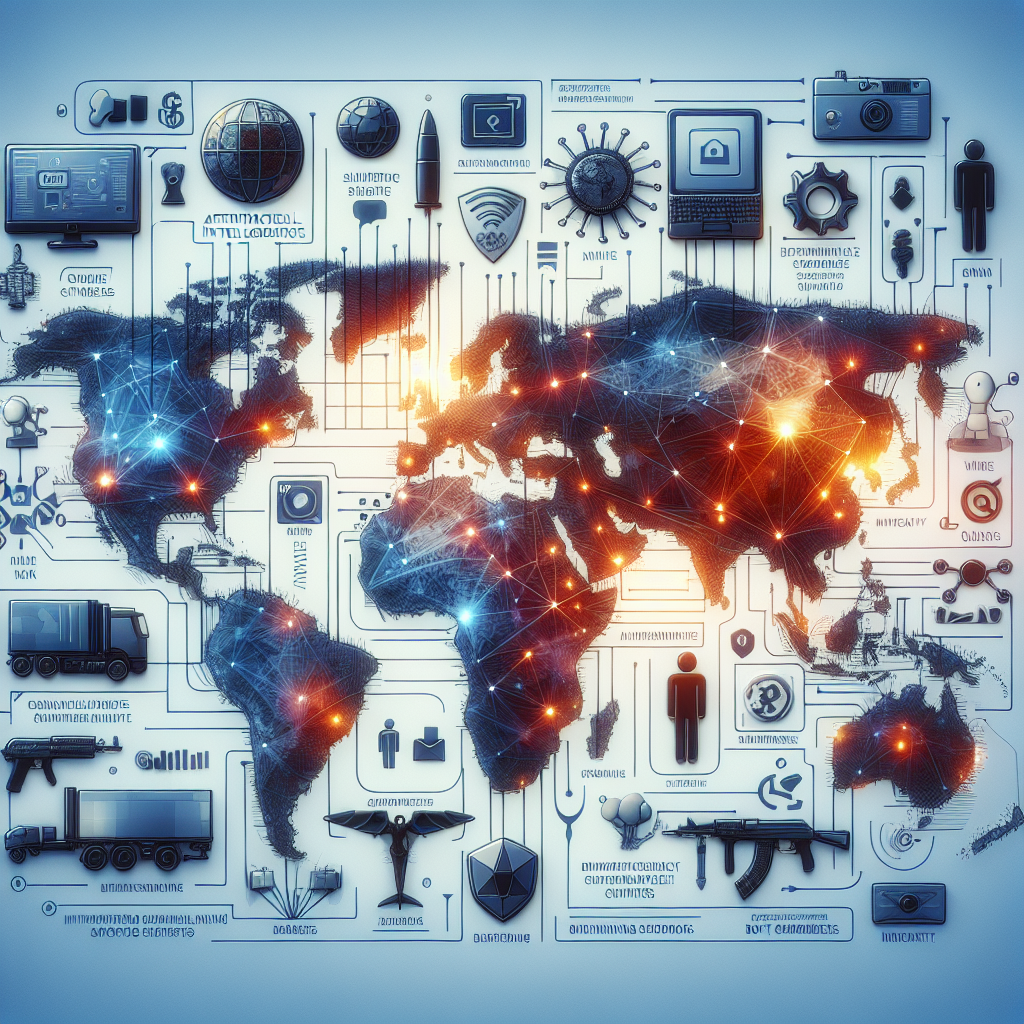About eldris
At Eldris, we automate SEO, multilingual site expansion, and EU compliance for brands scaling across Europe. Our AI-powered platform handles everything from content publishing to regulatory docs—so you don’t have to.
In This Article
- AI enables smarter, more responsive supply chains for international trade.
- Cross-border payments become safer and more efficient using AI tools.
- Multilingual support, dynamic recommendations, and cultural adaptation are all powered by AI.
- Global compliance and risk management are now more accurate thanks to AI automation.
- Businesses gain competitive advantage via AI-powered market intelligence and expansion planning.
- Fraud prevention and return management is significantly more effective when driven by AI.
- Machine learning models optimise pricing, user experience, and product discovery.
- The future of AI in E-commerce includes voice commerce and sustainability-focused applications.
Understanding AI’s Role in Borderless Selling
The Foundation of AI in Cross-Border Trade
AI in E-commerce acts as a transformative force, redefining how businesses scale across countries, continents, and cultures. Traditionally, expanding into global markets has been fraught with challenges such as logistical complexity, regulatory diversity, and cultural nuance. Artificial intelligence mitigates such obstacles by harnessing predictive analytics, natural language processing, and robotic process automation. These technologies enable firms to enter foreign markets with unprecedented speed and intelligence.
Moreover, AI provides scalable solutions to traditional barriers by automating localisation and customer support, streamlining product recommendations, and enhancing fraud detection. This allows companies of all sizes—from startups to multinational enterprises—to unlock new revenue streams in under-explored regions. In cross-border commerce, where understanding local demand and behaviour is complex, artificial intelligence offers a reliable compass.

AI-Optimized Supply Chains for Global E-commerce
Enabling Smart Logistics Operations
The backbone of effective global commerce is a resilient, intelligent supply chain. AI in E-commerce transforms supply chain operations by enabling predictive demand forecasting, route optimisation, and automated inventory management. Traders can now foresee stock shortages or surpluses in international markets before they affect order fulfilment. This foresight reduces wastage and improves delivery performance.
Additionally, AI integrates real-time data from shipping carriers, border customs, and weather patterns. This holistic intelligence allows for dynamic rerouting and better estimated time of arrival (ETA) predictions. With AI-powered warehouse management systems and robotics, companies can fulfil international orders efficiently, irrespective of time zones or regional disruptions. The synergy between AI and logistics not only reduces operational costs but also heightens customer satisfaction across borders.
“AI has redefined the meaning of efficiency and accuracy in cross-border freight management.” – Global E-commerce Logistics Report
Transforming Cross-Border Payments Using AI
Processing international payments can be fraught with delays, currency conversion issues, and fraud risks. AI in E-commerce addresses these challenges by improving payment security through biometric verification and pattern recognition algorithms. AI tools learn consumer purchasing habits to detect anomalies, ensuring real-time fraud detection and reducing false positives that can alienate international buyers.
Cross-border payments often involve navigating through various banks, regulations, and exchange rates. AI-driven fintech solutions simplify this process by recommending optimal payment gateways, automating currency conversion at the best available rates, and flagging regulatory inconsistencies. Some AI platforms even simulate transaction outcomes to equip retailers with clearer financial visibility—an essential factor when operating in volatile currency environments.
Personalization and Multilingual Experiences for International Markets
One of the standout applications of AI in E-commerce is in creating highly personalised and localised experiences for customers around the globe. Through natural language processing and machine translation, AI enables real-time adaptation of product descriptions, reviews, and live chat in the consumer’s local language.
This eliminates language as a barrier and builds trust with international customers. Predictive analytics also tailors the shopping experience by suggesting relevant products based on regional behaviour trends, cultural preferences, and seasonal demand. AI models factor in geolocation, historical interactions, and even weather patterns to present bespoke recommendations to consumers—no matter their location.
Ultimately, this level of personalisation increases engagement, lowers bounce rates, and significantly boosts conversion metrics. For a comprehensive overview of localisation technologies in commerce, refer to Learn more about AI Technology in Cross-Border E-commerce.
AI and Regulation: Automating Global Compliance
Adhering to international regulations, including data privacy laws like the GDPR and tax obligations such as VAT, can prove complex. AI simplifies this compliance landscape through automated risk assessments, real-time rule checks, and document classification.
AI tools can scan through product listings and detect potential regulatory red flags, minimising the likelihood of fines or shipping delays. For example, machine vision algorithms can identify items that may violate customs restrictions in specific countries. AI-enabled tax engines also calculate duties automatically based on the destination market, ensuring transparency in pricing during checkout.
Retailers now implement AI to audit ongoing operations and evolve according to regulatory changes. This proactive approach not only safeguards brands but also strengthens their reputation in diverse, compliance-sensitive markets.
Data-Driven Market Expansion with AI Insights
AI in E-commerce empowers businesses with precision-driven market intelligence. Rather than relying solely on intuition or dated reports, AI tools analyse billions of data points on consumer behaviour, competitor activity, market demand, and emerging trends. This insight enables better decision-making when prioritising new international markets for expansion.
AI platforms capable of sentiment analysis also scan social media, forums, and review sites to gauge real-time consumer sentiment in specific regions. This can offer invaluable feedback for product positioning, pricing strategies, and marketing tone.
For enterprises aiming to enter uncharted markets, AI serves as a strategic partner. It supports granular segmentation, demand projection, and even identifies ideal local partners or influencers. Explore detailed case studies on this topic via Read a related article.
Overcoming Cultural and Regional Shopping Barriers
Cultural disparities in purchasing behaviour can make or break an e-commerce venture. AI bridges this gap by adapting pricing strategies, aesthetic layouts, and promotional content to align with regional preferences.
For instance, an AI system might learn that red products sell better during Chinese New Year, or that mobile-first designs perform better in Southeast Asian markets. These insights inform not just marketing execution but also UX/UI design adaptations for different geographies.
Multimodal AI, which combines text, images, and audio data processing, enhances cultural sensitivity in branding efforts. Businesses using such technologies often experience higher engagement and retention metrics from diverse consumer bases. For a deeper analysis, see In-depth research on AI empowerment in e-commerce.
How AI Minimizes Returns and Fraud Globally
Product returns and fraudulent transactions are magnified in the context of international sales. AI combats these challenges by implementing dynamic size guides powered by computer vision and natural language explanations for products, thus bridging the consumer expectation gap.
On the fraud prevention front, AI systems monitor thousands of transaction features—including IP address, device fingerprint, and spending history—to assign real-time fraud risk scores. This nuanced protection allows retailers to approve authentic overseas purchases while shielding themselves from high-risk transactions.
Furthermore, through AI-driven post-purchase support such as smart chatbots and return optimisation engines, businesses can reduce operational strain and improve the overall customer experience across regions.
Machine Learning Models Tailored for E-commerce
At the heart of many AI systems lies machine learning, which continuously evolves based on data inputs. In global e-commerce, ML models are trained to understand trends, detect anomalies, and predict consumer needs more accurately over time.
These models power recommendation engines, visual search functions, and dynamic pricing algorithms. For example, a recommendation engine can suggest products based on a customer’s behaviour across multiple international sites using collaborative filtering and neural networks.
Visual AI allows customers to upload images and find similar or better-matching products across a global inventory. This drastically improves discovery and encourages purchases, especially in fashion and interior design verticals.
Future Trends in AI-Driven Borderless Commerce
As AI technology matures, we are already witnessing the emergence of compelling trends. Predictive AI will transition into prescriptive intelligence, where systems don’t just forecast but also autonomously suggest optimal actions. Voice commerce, powered by natural language understanding, may serve as a global customer service channel across multiple languages and accents.
Additionally, AI-powered sustainability analytics will play a growing role in aligning global supply chains with environmental and ethical standards. Retailers will increasingly adopt AI to track carbon footprints, reduce packaging waste, and build circular economy models.
We can also expect hyper-localised AI experiences which combine global intelligence with local nuance, allowing brands to feel “regional” no matter where they operate. Eventually, future AI applications will not just assist—it will co-pilot e-commerce operations.
Conclusion: Scaling International E-commerce with AI
[CONCLUSION_CONTENT]
AI in E-commerce is not a luxury—it is a necessity for any enterprise aiming to scale in the increasingly competitive world of global trade. From predictive logistics and multilingual personalisation to fraud reduction and market analytics, AI is unlocking the true potential of borderless commerce. As new frontiers in AI emerge, staying ahead of the curve will require commitment, innovation, and strategic partnership with AI-centric solutions providers.
Great guide on unveiling-ai-technology-transforming-cross-border-e-commerce – Community Feedback
How is AI technology changing cross-border e-commerce?
AI streamlines operations through automated logistics, personalized experiences, smarter payments, and compliance management across global markets.
What are the major benefits of using AI in global e-commerce?
Benefits include faster shipping, reduced errors, data-driven market targeting, improved fraud detection, and seamless multilingual customer support.
Can AI help with compliance in cross-border selling?
Yes, AI can monitor regulatory changes, automate compliance documentation, and proactively flag issues in cross-border transactions.








